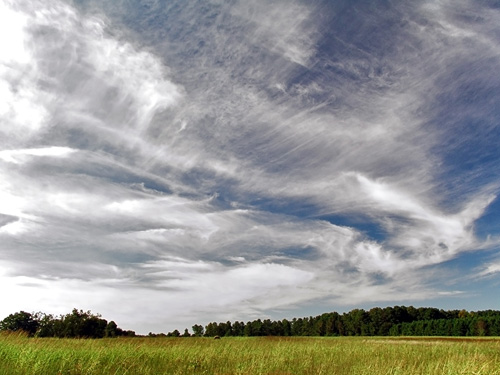Ice Nucleation in Climate Models
Date:2015-07-21
Every climate model developer strives to have his/her parameterization included in a widely used climate model. This wish recently came true for Dr. SHI Xiangjun, whose parameterization related to improving ice nucleation processes has been accepted in version 5.4 of CAM (Community Atmosphere Model). Dr. SHI became interested in the research topic when he was a PhD student in the Institute of Atmospheric Physics, Chinese Academy of Sciences, supervised by Prof. WANG Bin. He currently works at Hebei Climate Center.
Cirrus clouds play an import role in the global climate system because of their extensive global coverage. They can form through the homogeneous freezing of soluble aerosol/droplet particles or the heterogeneous nucleation on insoluble aerosol particles, called ice nuclei. However, in terms of ice nucleation in general circulation models (GCMs), some important processes are not currently considered, such as the effects of pre-existing ice crystals (Shi et al., 2013) and vertical fluctuations.

A sky filled with many types of cirrus clouds(Photo from Wikipedia)
To improve the ability of GCMs to estimate future climate change, it is important for GCMs to simulate ice nucleation well, explains Dr SHI, “We try to improve the treatment of ice nucleation in a more realistic manner and estimate the aerosol indirect effects via cirrus clouds.”
Last year, Dr Shi and his American collaborators attempted to improve the ice nucleation scheme of CAM through the consideration of pre-existing ice crystals, and the work was subsequently published in a recent paper (Shi et al., 2015). “Luckily for us,” says Dr Shi, “the parameterization has been accepted by CAM5.4.” The presence of pre-existing ice crystals may hinder the occurrence of homogeneous nucleation by depleting water vapor. Dr Shi continues: “Our previous study showed that the ice number concentration decreases considerably and agrees well with observations after considering the effects of pre-existing ice crystals” (Shi et al., 2013).
One of the goals of model development is the successful projection of future climate change. With the realization that the Earth’s climate is rapidly changing, a number of mechanisms through which climate could be artificially stabilized have been proposed. Related to this, the updated CAM model shows that the injection of ice crystals can induce greater cirrus cloud optical thickness, thereby cooling the Earth’s climate. Compared to other approaches, this mechanism is relatively safe and less costly.
References
Shi, X., Wang, B., Liu, X., and Wang, M, 2013: Two-moment bulk stratiform cloud microphysics in the grid-point atmospheric model of IAP LASG (GAMIL).
(http://link.springer.com/article/10.1007/s00376-012-2072-1)
Shi, X., X. Liu, and K. Zhang, 2015: Effects of pre-existing ice crystals on cirrus clouds and comparison between different ice nucleation parameterizations with the Community Atmosphere Model (CAM5).
(http://www.atmos-chem-phys.net/15/1503/2015/acp-15-1503-2015.html)
Contact: Dr. SHI Xiangjun, lps619@126.com
